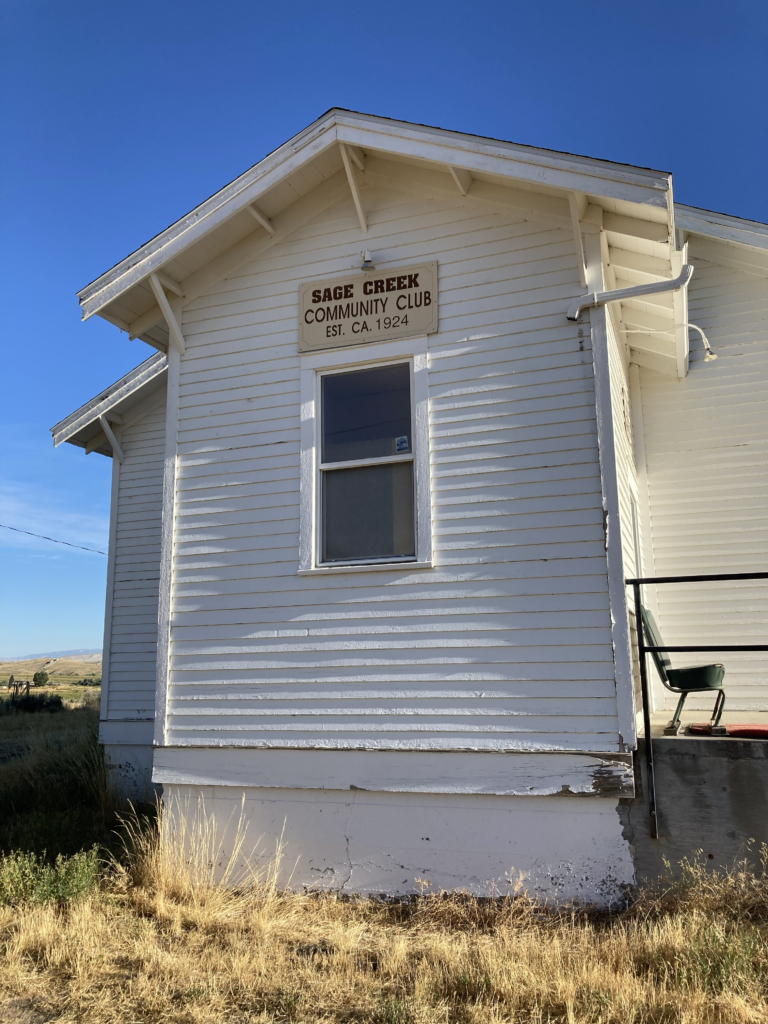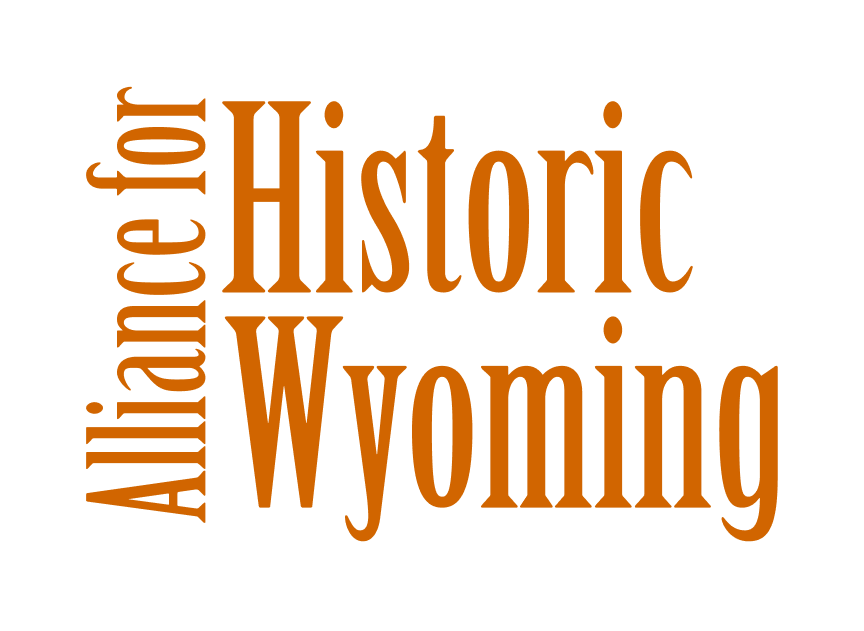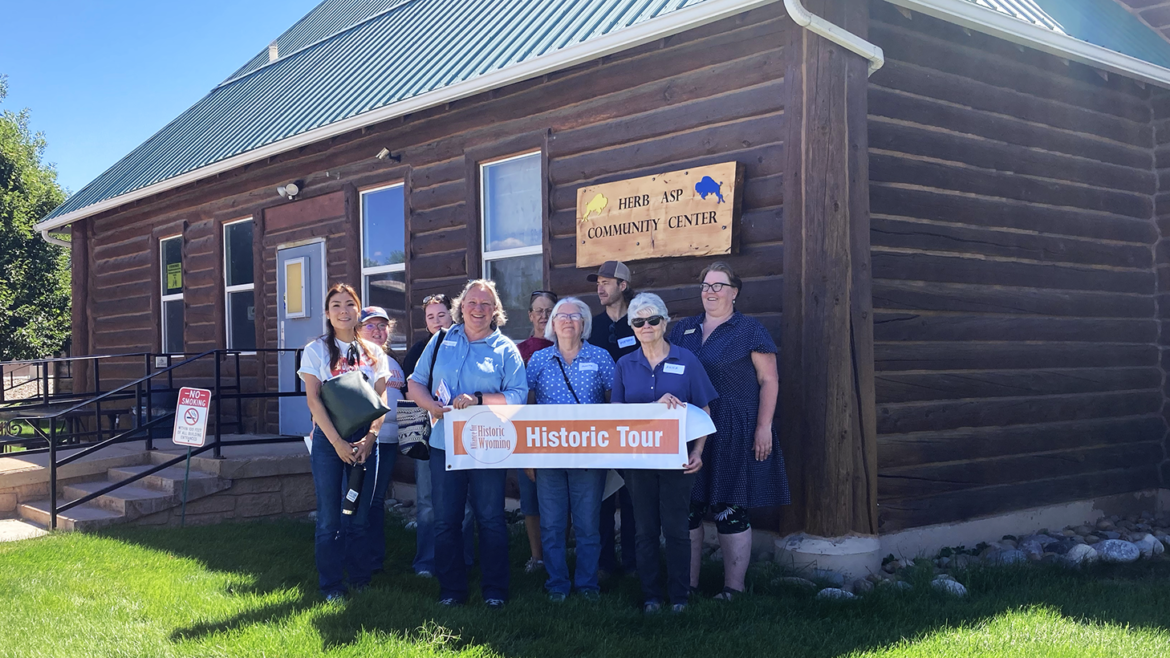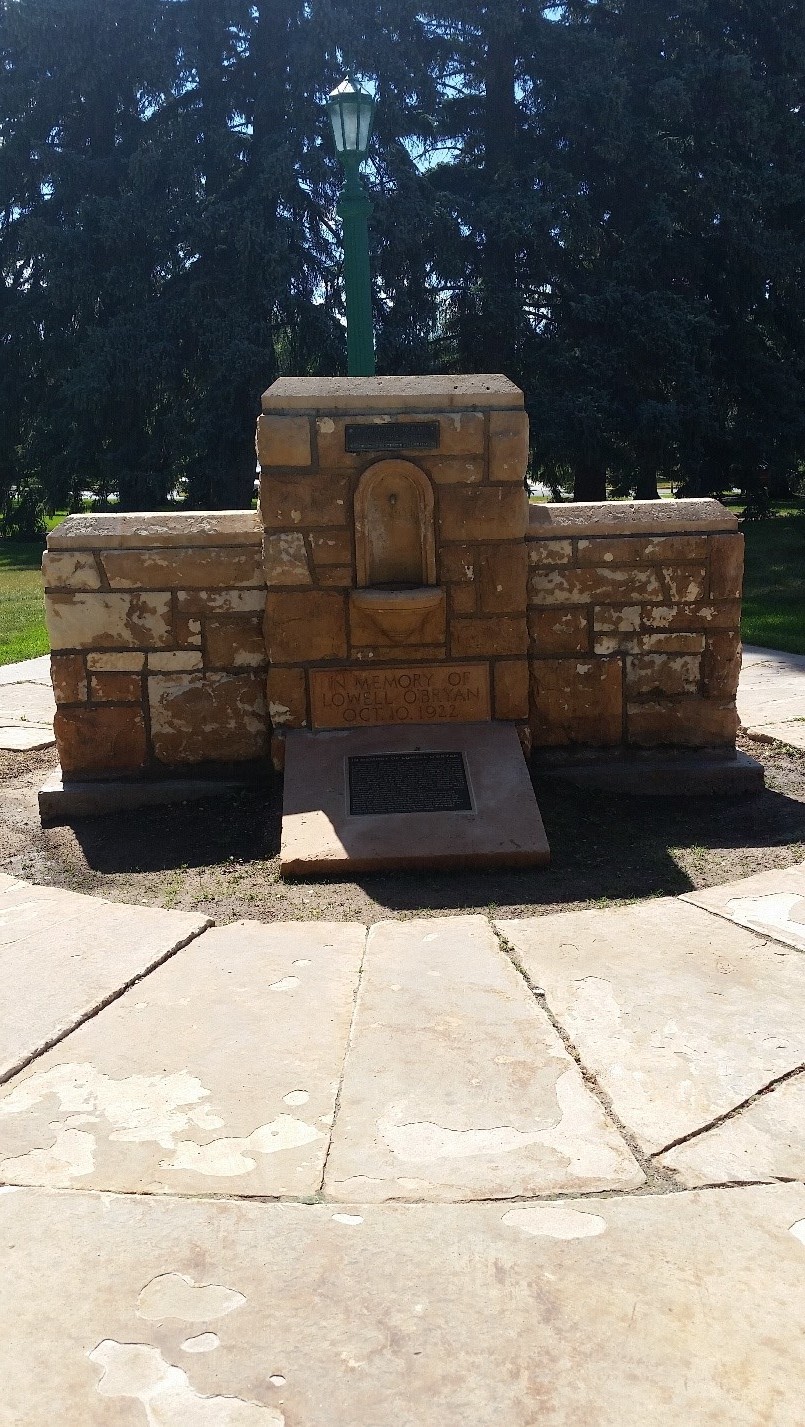A beautiful morning greeted attendees and AHW staff for a tour of four community halls in Park and Big Horn counties in northwest Wyoming in late August. The halls were selected because they represent several different types commonly found in the state, and they are all still actively used for community events.

The heyday of hall construction was the 1920s and 30s, when many areas of the state were being settled and people realized they needed a place to gather. There are a number of halls that were built with the help and funding of the Depression-era WPA and CCC. Most of them are on either side of the Big Horn Mountains, because there was easy access to logs and lumber for building. Many halls were founded by women’s clubs, which were key to the social structure of rural communities—they held fundraisers, and got materials and labor donated, so people could have a place to meet and build a cohesive sense of place and community. A number of community halls are repurposed school buildings. Rural schools have always been community centers, so when small schools were closed and consolidated it was an easy step to turn them into community halls.
The first hall on the tour was the Sage Creek Community Club east of Cody, which is celebrating its centennial this year. The land for the building was donated by a local rancher and shares were sold to raise money for materials. The basement was dug with horses and a scraper, like those used to dig the local canals. The basement houses a kitchen and dining area, and the main floor has a stage at one end with two painted advertising curtains, which are common in many community halls. The club has been active in raising funds to keep the hall in good shape—they recently replaced the roof, and their next project will be painting the outside. We found out after the tour that the hall had just been listed a few days before on the National Register of Historic Places, a fitting honor for its 100th birthday.

The next hall was built as the Willwood Irrigation District offices in 1927, when the area was opened for homesteading. The building includes a community meeting room and a basement with a kitchen and has been the scene of many a community celebration. We were met by several long-time residents of the district who shared stories of holiday parties and harvest picnics, and reminisced about the small settlement of Willwood that hosted a store, beauty shop, and blacksmith shop. It is the people and the stories that really bring these historic buildings alive.
The group then drove on to Greybull where the imposing log community hall still sits on the town’s main street and is used today as a recreation center. This was a WPA building opened in 1936 and used for plays, concerts, dances, basketball games, holiday parties and many other community events. It has undergone a number of renovations in recent years, including a newly refinished gym floor just in time for the tour.

The final stop was the small mountain town of Shell, which also boasts a log hall built with WPA funding. A long-time resident shared stories of playing basketball in the building, something the local women’s club, which managed the hall, didn’t approve of. The current board of the hall has been active in raising funds for renovations, and there was an oral history workshop happening after our visit so the building is still a vital center of community activity and celebration.
There are several other community halls in the Big Horn Basin, including the Irma Flat Mother’s Club in an old schoolhouse west of Cody, the Cowley Gym (another WPA project), the stone Lower Shell Schoolhouse, the Whistle Creek Hall east of Willwood, the Ralston Clubhouse (now an Air BnB rental), and several clubhouses made from repurposed Heart Mountain barracks that are no longer standing. And those are just a fraction of the community halls found all across the state, symbols of the need for connection and celebration in Wyoming’s small towns and far-flung rural areas. The AHW values these home-grown buildings for what they represent about the state’s history, and the future of its people and communities. We extend our thanks to the caretakers of the Big Horn Basin halls, and to Wyoming Humanities for funding the tour.
Don’t miss our future Unbarred Tours, where we explore historic locations that are typically off-limits to the public to learn the stories of historic places in Wyoming.



